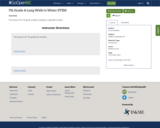
This lesson is for 7th grade students reading A Long Walk to Water.
- Subject:
- English Language Arts
- Material Type:
- Activity/Lab
- Author:
- Carrie Robledo
- Date Added:
- 03/25/2022

This lesson is for 7th grade students reading A Long Walk to Water.

This resource accompanies our Rethink 7th Grade ELA course. It includes ideas for use, ways to support exceptional children, ways to extend learning, digital resources and tools, tips for supporting English Language Learners and students with visual and hearing impairments. There are also ideas for offline learning.

This parent guide supports parents in helping their child at home with the 7th grade ELA content.

The 7th grade poetry unit gives an in-depth approach to poetry. Included are worksheets, rubrics, and answers keys where applicable along with CCSS literature examples.
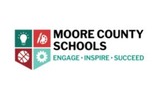
This is a hands-on project that uses George Orwell's novel, Animal Farm, as the touchstone text. Students work in groups to construct a functioning windmill that can generate electricity. Each student has a role based on the characters in the book. There are also segments of the project that focus on extracting key information from the text.

Students use Shakespeare's Secret, a featured title on the Teachers' Choices Booklist (International Reading Association, 2006), as a springboard to exploration of the controversy regarding the authorship Shakespeare's works. The novel makes liberal use of the historical details surrounding William Shakespeare's life, and exposes students to the possibility raised by some theorists that Edward de Vere, Earl of Oxford, was the true author of the works that have long been attributed to the Bard. Students explore the historical references in the novel and generate questions for further research. As they research these questions on suggested websites, they organize their findings with the help of the ReadWriteThink Notetaker. Then they work in small groups to create and present short dramatic skits that creatively connect the novel with the historical facts.

A teachers guide for Betsey Brown by Ntozake Shange, including chapter-specific questions for increased comprehension, questions for class discussion, and suggestions for further study.

The story of "The Beauty and the Beast" has captivated us for many years. It is fun to read or watch a video of. But did it really happen? It is fun to compare fiction and nonfiction. Most students will in their backgrounds relate to a story like this. Also it is fun for students to learn and then survey others based on what they have learned.

In this lesson, students will read letters written during the Civil War. Referring to their knowledge about the Civil War, they’ll develop a clear understanding of the message of the letter. They will edit the letters for mechanics and create a dramatic reading based on their letter. Then students will create their own Civil War dramas, using a fictional letter they create.
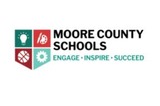
Students will use the green screen to create a newscast in a small group based on the setting of a WWII literature circle novel. Students will first write their informational skit, create text features (charts, diagrams, photos w/ captions, etc) inside of their news presentations in order to teach the class about WWII from their novel's perspective and setting.
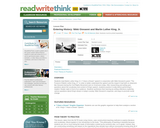
In this lesson, students read Martin Luther King Jr.'s "I Have a Dream" speech in conjunction with Nikki Giovanni's poem "The Funeral of Martin Luther King, Jr." in order to better understand the speech and the impact it had both on observers like Giovanni during the Civil Rights Movement and on Americans today. After researching and writing quiz questions about the vocabulary and content of King's speech, students practice it orally before performing it readers' theater-style in front of an audience. Students synthesize their learning by writing reflections exploring various questions about King's dream in today's society, Nikki Giovanni's response, and ways to promote social change.
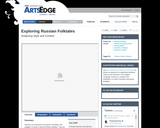
In this lesson, students are introduced to the genre of folktales and engage in a study of several Russian folktales. They are asked to read the tales aloud, and then to fill in a chart about each one. Next, they analyze the charts, answering questions about the folktales’ setting, main characters, and "uniquely Russian" attributes. They also compare and contrast Russian folktales with folktales they may have heard as young children. The lesson culminates with a writing assignment in which students will analyze the folktales or create their own.
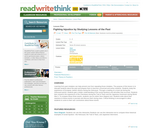
Learning from past mistakes can help prevent one from repeating those mistakes. The purpose of this lesson is to educate students about the past and prepare them to become concerned and active students. Students study the experience of European Jewish citizens during the Holocaust. Through a reading of a novel set during the Holocaust period, students gain a better understanding of the social injustices and atrocities that occurred. Students then research the experience of the Cherokees during the Trail of Tears and the Japanese Americans during World War II. To compare these three events, students use an online Venn diagram tool. Students write about their reactions to these events in journals and discuss them during class. Critical thinking is encouraged to allow students to come to their own conclusions about these events.
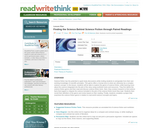
Science fiction has the potential to spark lively discussions while inviting students to extrapolate from their own working knowledge of scientific principles. They first define the science fiction genre and then read and discuss science fiction texts. Next, they conduct research to find science facts that support or dispute the science included in the plot of the science fiction book they read. Students then revisit their definition of the genre and revise based on their reading. Finally, students complete a project that examines the science fiction genre in relation to real-world science concepts and topics.

In this lesson students gather textual evidence from both the novel and information text to begin preparing for their two-voice poems.
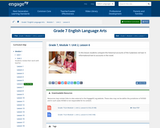
In this lesson students compare the historical accounts of the Sudanese civil war in informational text to accounts in the novel.
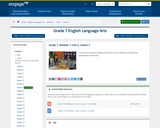
In this lesson students analyze the author's use or alteration of historical information in the novel.
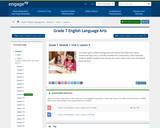
This lesson gives students background information that helps them better understand Nya’s story. It includes the Mid-Unit 2 Assessment, which evaluates students’ ability to explain how and why the novel’s author both used and altered historical facts.
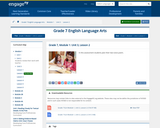
In this assessment students plan their two-voice poem.
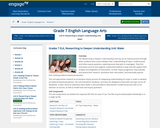
The Researching to Deepen Understanding units lay out an inquiry process through which students learn how to deepen their understanding of topics. Students pose and refine inquiry questions, exploring areas they wish to investigate. They find and assess sources and organize researched material in ways that will support their analysis and integration of information.